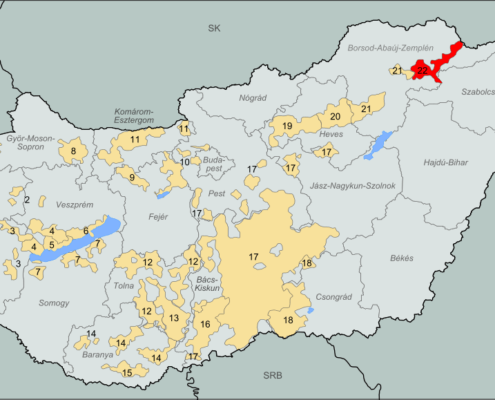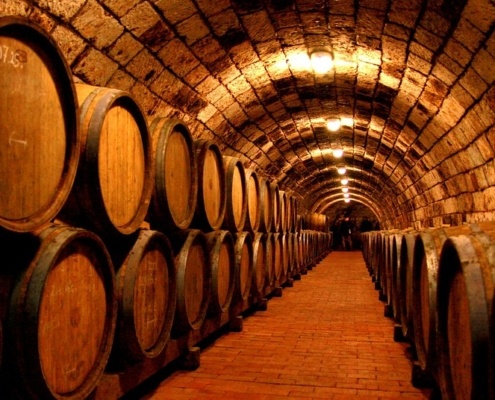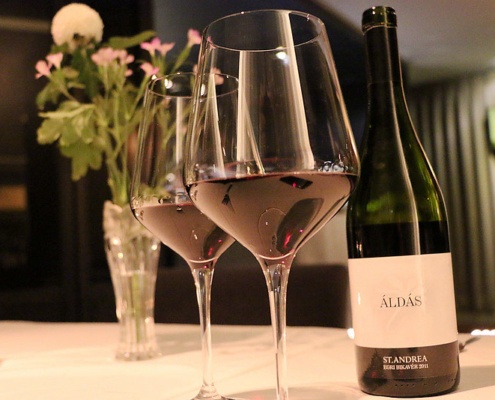Mature Budapest Nightlife: Sophisticated Bars for 45+ in Budapest
Welcome to Budapest, where the night comes alive with sophistication and a dash of humor. If you’re 45 and beyond, we’ve curated the ultimate guide to Budapest Nightlife tailored just for you. It’s all about sipping fine wine, enjoying smooth jazz, experiencing night baths, and cruising on the Danube with a hot drink while reveling in the city’s rich cultural tapestry.
Join us on a journey through Budapest’s after-hours charm, where every moment is a celebration of the finer things in life. However, it’s worth noting that venues designed specifically for this age group, where you can unwind in a cultured manner with your age buddies, are not very common in Budapest.
So what to look for?
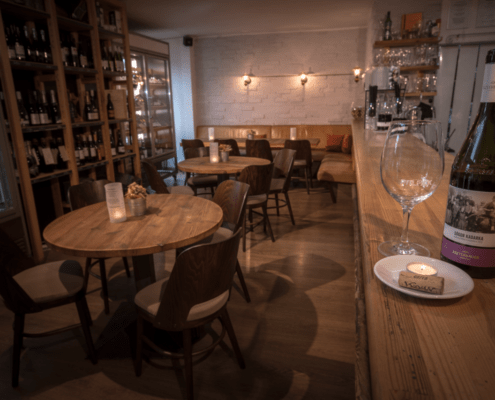
Wine Bars
Fortunately, wine bars in Budapest are not concentrated in a specific location. Whether near the historical buildings of the city center, amidst the buzz of the Jewish District, or strolling along the Grand Boulevard, you can find great spots on both the inner and outer parts of the Buda side of the Danube. A wine bar differs from a traditional hospitality venue in that everything revolves around wine here. The selection is carefully curated, shaping not only the menu but often also the layout of the interior, with wine as the guiding principle. This creates a unique atmosphere, distinctly characteristic of each wine bar. Local wine bars showcase specialties from every region of Hungary and, upon request, bring flavors from France, Italy, Spain, or even Australia. As accompaniments, you can choose from traditional options like cheese and meat platters, taste olives, or, for those with a sweet tooth, find a perfect place where macarons and chocolates accompany the wine tasting. If you want to hang out amongst locals in one of our favorite neighborhoods in Buda, we can recommend the Palack Wine Bar, but if you want to stay in the heart of the town in an elegant bistro environment it is worth trying the Marlou Bistro.
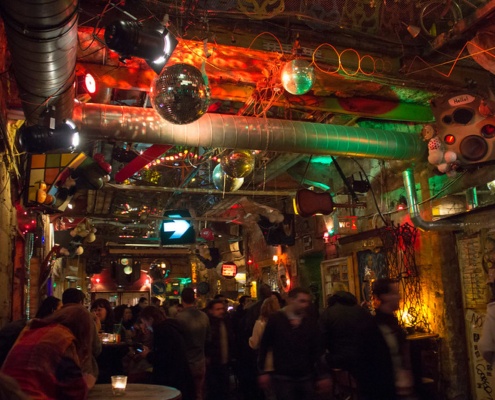
Ruin Bars
After World War II and the Cold War years, numerous buildings in Budapest’s old Jewish Quarter were left in disrepair. In the early 2000s, several enterprising individuals took on the task of transforming these rundown structures and courtyards into unique underground bars and pubs, ultimately earning them the moniker “ruin bars,” known locally as “romkocsma” in Hungarian. These bars are characterized by their eclectic and quirky decor, featuring mismatched furniture, vintage items, art installations, and graffiti. The majority of ruin bars are concentrated in the historic Jewish Quarter of Budapest, particularly in District VII. Szimpla Kert, one of the pioneering ruin bars, is often considered the flagship and is located in this district.
Plenty of tourists, including those with gray hair, visit Szimpla Kert:-) Arrive early evening to avoid the crowd. Free Entry.
Jazz Clubs
Intimate and cozy clubs are favored venues for jazz enthusiasts, serving as the bastions of a direct connection between musicians and the audience. Typically falling within the hospitality sector, these establishments feature live music with varying frequency, ranging from daily performances to several times a week. Those interested can find music to suit their taste every day of the week.
For updated clubs in Budapest with Jazz music, please refer to Hunjazzfed.com
Winter Cruise on the Danube
Seeing the river from different sites on Buda and Pest sides is beautiful, but being on it at night is special. Take a river cruise with a hot drink. Over the centuries, this river and its banks have witnessed a rich tapestry of history, marked by bloodshed and war. While ideal for a daytime stroll, the freezing nights call for a cozier experience on a boat.
For weekend afternoon Danube cruises please refer to Mahart Passnave. If you would like not only to cruise for an hour but also discover the sights of the Danube, you can listen to our 11-language wifi audio guide on your own phone.
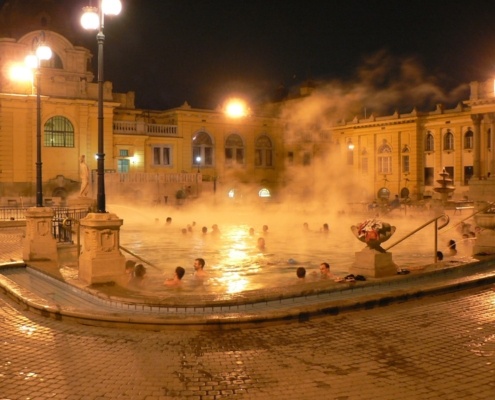
Thermal Baths at Night
A Friday night swim at Rudas thermal baths is an incredible experience. Imagine soaking in warm water beneath a 500-year-old Turkish dome, lit by the moon through skylights—it’s unlike anything else. The best part is the old thermal pools; while the new “wellness” section is just different temperature jacuzzis. The swimming pool is in the middle, with wellness pools and old thermal baths on opposite sides. Enjoy a sip of champagne in the rooftop Danube-view pool. Bring a refillable water bottle, and there are fountains for good water. Wearing flip-flops for walking around is mandatory. Bring towels and bathing suits. You’ll receive a wristband with a microchip for your cabin; it’s safe and secure. Relax and enjoy the thermal oasis on Fridays from 10 pm to 3 am. The entry fee is 12,300 HUF, and online tickets are available only.
Join our daily Free Budapest Walk and Free Buda Castle Hill Tour.
But wait, there’s more! Before we release you into the wilds of Budapest, our fabulous tour guides will give you the lowdown on daytime and nighttime adventures, sprinkled with some extra handy tips for conquering the city.
Now, go out and savor your Budapest Nightlife experience—where age is just a number, and the city rolls out the red carpet for those who know how to appreciate the finer things!
Cheers to a night of revelry and unforgettable memories.

